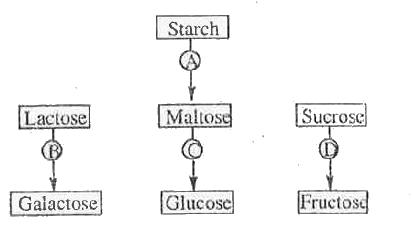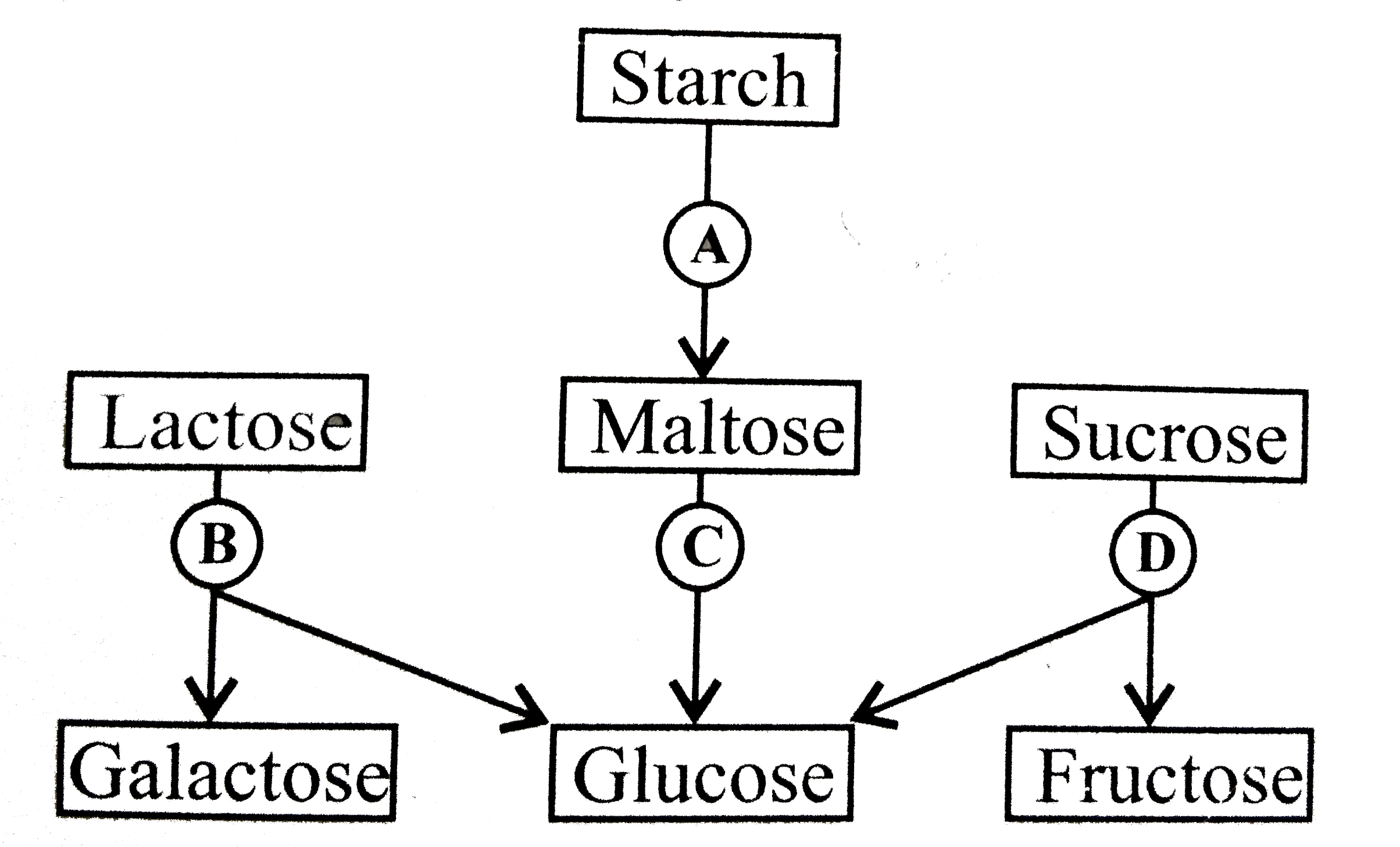In lysosomes ,
a. The acidic condition is maintained by pumping protons to the exterior part.
b. Intercellular digestion occurs .
c. All types of macromolecules are digested .
d. The enzymes. Present in vesicles belong to acid hydrolases.
Select those statements which are correct .
c and d
a and d
a and b
b and d
The correct Answer is:A
To solve the question regarding the statements about lysosomes, we will analyze each statement one by one to determine which ones are correct.
1. Statement A: The acidic condition is maintained by pumping protons to the exterior part.
- Analysis: This statement is incorrect. Lysosomes maintain an acidic environment by pumping protons (H⁺ ions) into the interior of the lysosome, not to the exterior. The proton pumps are located in the lysosomal membrane and they transport protons into the lysosome to create the acidic conditions necessary for the enzymes to function.
- Conclusion: Incorrect.
2. Statement B: Intercellular digestion occurs.
- Analysis: This statement is also incorrect. Lysosomes are involved in intracellular digestion, meaning they digest materials within the cell. Intercellular digestion would imply digestion occurring between cells, which is not the function of lysosomes.
- Conclusion: Incorrect.
3. Statement C: All types of macromolecules are digested.
- Analysis: This statement is correct. Lysosomes are capable of digesting all types of macromolecules, including proteins, carbohydrates, lipids, and nucleic acids. They contain various enzymes that can break down these macromolecules.
- Conclusion: Correct.
4. Statement D: The enzymes present in vesicles belong to acid hydrolases.
- Analysis: This statement is correct. The enzymes found in lysosomes are indeed acid hydrolases, which function optimally in the acidic environment of the lysosome. These enzymes are responsible for breaking down various biological macromolecules.
- Conclusion: Correct.
Final Answer:
The correct statements are C and D.
- Analysis: This statement is incorrect. Lysosomes maintain an acidic environment by pumping protons (H⁺ ions) into the interior of the lysosome, not to the exterior. The proton pumps are located in the lysosomal membrane and they transport protons into the lysosome to create the acidic conditions necessary for the enzymes to function.
- Conclusion: Incorrect.
- Analysis: This statement is also incorrect. Lysosomes are involved in intracellular digestion, meaning they digest materials within the cell. Intercellular digestion would imply digestion occurring between cells, which is not the function of lysosomes.
- Conclusion: Incorrect.
- Analysis: This statement is correct. Lysosomes are capable of digesting all types of macromolecules, including proteins, carbohydrates, lipids, and nucleic acids. They contain various enzymes that can break down these macromolecules.
- Conclusion: Correct.
- Analysis: This statement is correct. The enzymes found in lysosomes are indeed acid hydrolases, which function optimally in the acidic environment of the lysosome. These enzymes are responsible for breaking down various biological macromolecules.
- Conclusion: Correct.
The correct statements are C and D.
Similar Questions
(a) Minute vesicles
(b) Membrane bound
( c ) Contained enzymes
(d) Present in plant and animals
Above statements are correct for :-
View SolutionRead the following statements about activated sludge.
a. It is the effluent passed from anaerobic digester to the settling tank.
b. A small part of activated sludge is pumped into large tanks called anaerobic sludge digesters.
c. A small part of activated sludge is pumped back Into the aeration tank to serve as inoculum. Which of the above statements are incorrect?
View SolutionThe given flowchart shows the fate of carbo hydrates during digestion in the human alimentary canal. Identify the enzymes acting at stages included as A, B, C and D and select the correct option

View SolutionThe given flowchart shows the fate of carbohydrates during digestion in the human alimentary canal. Identify the enzymes acting at stages indicated as A, B, C and D and select the correct option.

View SolutionRead the following statements a. Removal of CO, from amino acid histidine converts it into an amine. b. Metabolites are converted into each other in a series of linked reactions called metabolic pathways. c. There is no uncatalyzed metabolic conversion in living systems. d. In living systems, the proteins with catalyti power are known as enzymes. How many above statements are correct?
View SolutionWhich of the following statement are CORRECT?
I. Renin is a proteolytic enzyme found in gastric juice of infants which helps in the digestion of milk proteins.
II. No significant digestive activity occurs in the large intestine.
III. The egestion of faeces to the outside through the anal opening ( defecation ) is a voluntary process and is carried out by a mass peristaltic movement.
IV. Ejection of stomach contents through the mouth is a reflex action controlled by the vomiting center in the medulla.
(a) I, II and IV
(b) II, III and IV
(c) III and IV
(d) II and III
View SolutionRead the following statements (A-D)
(A) The stomach stores the food for 4-5 hours.
(B) The food mixes throughly with the acidic intestinal juice
(C ) Trypsinogen is activated by an enzyme-enterogastrone, secreted by the intestinal mucosa
(D) Renin is enzyme found in gastric juice of infants which helps in digestion of milk protein
How many of the above statements are wrong ?
View SolutionRead the following statements. a. A group of similar cells along with intercellular substances performing a specific function form a tissue. b. All members of kingdom animalia consists of only four basic type of tissues. c. When two or more organs perform a common function by their physical or chemical interaction that together form an organ system. d. The organ stomach in humans has all four types of tissues. How many above statements are correct?
View SolutionRead following statements regarding various steps of urine formation.
A. Blood flows through glomerular capillaries under a pressure created due to difference in diameter of afferent and efferent arterioles.
B. Filtrate formed after ultrafiltration is isotonic to blood plasma.
C. Reabsorption of glucose occurs throughout the tubules of nephron.
D. Selective tubular secretion of H+ and K+ ions help in maintaining ionic balance of body.
Select the option having only correct statements
1) A and C
2) B , C and D
3) A , B and D
4) C and D
View SolutionThe following is a scheme showing the fate of carbohydrates during digestion in the human alimentary canal. Identify the enzymes acting at stages indicated as A, B, C, and D. Choose the correct option from those given.

View Solution
